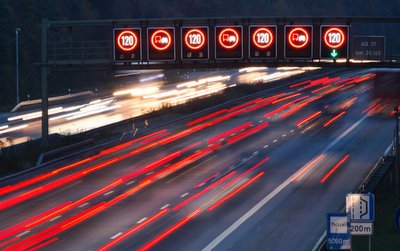
If you think your next road trip is in your own hands, think again. Behind the scenes of traffic flow there may be a number of technologies controlling your journey. From road, to air to even the waterways, your path from A to B may be subject to change in real time. Today we look at hidden technologies on the road, which “decide when and how you will get there”, according to Chris Baraniuk of Verge.com .
Whilst we sometimes think arriving at a green traffic light , is pure luck, a ‘green wave’ definitely exists, whereby all the traffic lights conveniently turn green as traffic approaches, opening up an unrestricted route for motorists. As published in wired.com, reporter Rachel Ehrenberg from Science News indicated, “Green Waves have become more sophisticated, with adaptive systems able to synchronize traffic lights when it is most advantageous and safe to do so”. This technology is not only used for cars, but the City of Copenhagen has introduced a ‘green wave’ for its masses of cyclists to ease traffic congestion and increase the flow of traffic.
In many countries, sensors are hidden beneath the road network. Within NSW, RMS developed a program called the Sydney Co-ordinated Adaptive Traffic System or commonly known as SCATS. This system is an advanced computer system that monitors traffic signals and volumes of traffic in real time. The RMS uses this data to co-ordinate adjacent traffic signals to ease traffic congestion and improve traffic flow.
The ACT Government, currently use Bluetooth technology, called Territory and Municipal Services (TAMS), as part of its traffic studies. This technology can assess vehicular speeds and travel times, as well as understand the route that commuters are taking. The technology uses data receivers and computer software to record the travel information.
In the UK, similar technology called MIDAS (Motorway Incident Detection and Automatic Signalling sends data to traffic control rooms to monitor how congested a road has become. MIDAS detects the number of vehicles passing over a section of a road in real time. At high levels of congestion, traffic can be slowed down via fluctuating speed limit signs, which allow cars to travel more closely together and to take advantage of the motorway’s full capacity. Baraniuk reports “this is often done ‘upstream’ to prevent extreme cases of congestion which may already be forming”. That is why what looks like smooth-moving traffic is sometimes gently forced to slow down, because reduction in speed helps prevent congestion further behind.
Nick Hounsell, Head of the Transportation Research Group at the University of Southampton, suggests “the dynamics of traffic movement are very sensitive, which is why these clever, pseudo-intelligent systems are so useful”. As an example, Hounsell points out “the butterfly effect, where a sudden slowing down of even a single driver can become amplified to a full-scale traffic jam and perhaps lead to an accident further behind”. Ideally, using these traffic management technologies would help to reduce crashes and fatalities.
